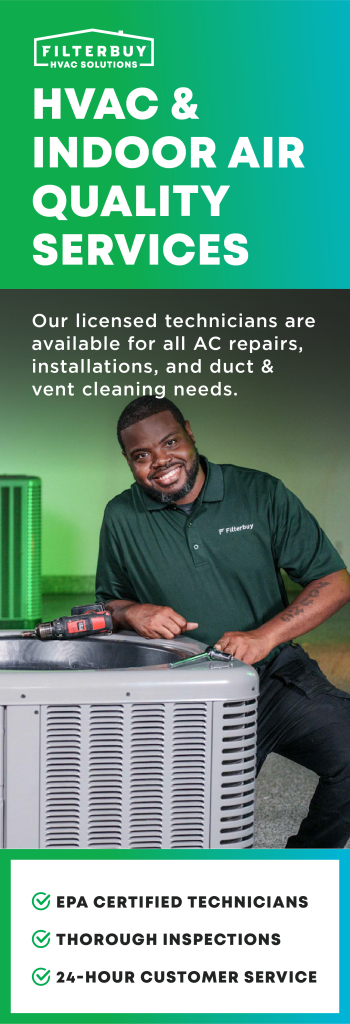Pet-Friendly Practices for Enhancing Indoor Air Quality and Overall Household Health

Creating a Health-Conscious Home for Pets and Humans
In today’s bustling homes across America, where the love for pets coexists with the pursuit of a healthy living environment, maintaining indoor air quality is of paramount importance. As countless families share their spaces with dogs, cats, and other furry companions, it becomes essential to implement various strategies that not only enhance the comfort of pets but also protect the health of the entire household.
- Indoor Plants: Integrating specific houseplants into your living space can vastly improve air quality. Plants like spider plants, Boston ferns, and bamboo palms are not only aesthetically pleasing but are also safe for pets. They act as natural air purifiers by absorbing toxins and releasing oxygen, creating a fresher environment for both humans and animals.
- Air Purifiers: Investing in a high-quality air purifier can be one of the most effective strategies to filter out allergens, including pet dander and dust mites. Models equipped with HEPA filters are particularly efficient in trapping airborne particles, offering significant relief for allergy sufferers and helping maintain pristine air quality in homes that have pets.
- Regular Cleaning: Establishing a thorough cleaning routine is critical in minimizing pollutants. Vacuuming with pet-friendly vacuums equipped with HEPA filters and mopping floors regularly can help keep your home clean and allergen-free. Don’t forget to wash pet bedding, blankets, and toys frequently to keep allergen levels down.
Furthermore, incorporating the right practices can significantly enhance the indoor climate for everyone in the home. For instance, adopting a vacuum specifically designed for removing pet hair can streamline cleaning efforts. Using non-toxic cleaning supplies can also safeguard your loved ones from harmful chemicals, ensuring a healthier living space.
- Proper Ventilation: Ensuring proper airflow throughout your home is vital in preventing the stagnation of indoor air pollutants. Opening windows whenever possible allows for the exchange of fresh air, helping reduce the buildup of indoor allergens.
- Healthy Pet Diet: Feeding pets a balanced and nutritious diet can have a remarkable effect on their health, which, in turn, can reduce unpleasant odors and dander excess. Consulting with a veterinarian to devise an appropriate diet can help maintain your pet’s health and enhance overall air quality.
- Humidity Control: Keeping humidity at an optimal level—between 30% and 50%—can prevent the growth of mold and mildew, both of which can lead to respiratory issues. Using dehumidifiers in damp areas, like basements, can assist in maintaining these levels and ensuring clear airways for everyone.
By integrating these practices into your daily routine, you can foster an environment where both pets and family members can thrive. Emphasizing pet-friendly practices could be the missing piece in your quest for a healthier indoor atmosphere, inviting everyone—two-legged and four-legged alike—to enjoy a clean, refreshing home. Taking the time to explore the various options available to enhance indoor air quality is an investment in the health and happiness of your entire family.
DISCOVER MORE: Click here to learn how communities are making a difference</p
Strategies for a Cleaner, Healthier Home
Creating a pet-friendly environment goes beyond simply accommodating our furry friends; it involves adopting a holistic approach to ensure that our homes remain healthy sanctuaries. By embracing specific practices that improve indoor air quality, pet owners can significantly enhance both their quality of life and that of their pets. Here are several additional strategies worth considering:

- Choose Pet-Safe Air Fresheners: Many conventional air fresheners contain harmful chemicals that can aggravate allergies or respiratory problems for both pets and people. Opt for natural alternatives such as essential oils or homemade potpourri composed of dried herbs and flowers. Always ensure that any scenting product is safe for your pets, as some essential oils can be toxic to them.
- Grooming and Bathe Your Pets Regularly: Maintaining a consistent grooming routine can drastically reduce pet dander and hair accumulation within your home. Brushing pets several times a week not only helps keep their coat healthy but also minimizes shedding, making it easier to maintain a clean living space. Additionally, establish a regular bathing schedule that aligns with your pet’s specific breed requirements to further reduce allergens.
- Optimize Your Home’s Layout: Consider arranging your home with pet-friendly zones in mind. Designate areas for pets to play and rest, away from areas that experience high foot traffic. This will not only protect your furniture and decor but also help control the spread of allergens and maintain a cleaner atmosphere.
Another often overlooked practice in the quest for improved indoor air is the choice of material finishes and furniture. When selecting flooring or upholstery, consider hypoallergenic options that are less likely to trap allergens and dust. Fabrics such as leather, microfiber, or those with tightly woven designs can minimize the collection of hair and dander, making them easier to clean.
- Educate Yourself on the Use of Cleaning Products: The cleaning products we use in our homes hold the potential to impact air quality significantly. Many common household cleaners release volatile organic compounds (VOCs) that can accumulate in the home environment. Seek non-toxic and eco-friendly cleaning supplies that are effective yet safe for both pets and humans. Look for certifications such as Green Seal or EPA Safer Choice.
- Regular HVAC Maintenance: Don’t neglect the health of your heating, ventilation, and air conditioning (HVAC) systems. Change filters regularly, and consider investing in electrostatic filters designed to capture small particles such as pollen and pet dander. An unmaintained HVAC system can recirculate allergens throughout your home, defeating your efforts to improve air quality.
In the endeavor of creating a healthier indoor environment, every step counts. By integrating these practical solutions into your lifestyle, you’re not only nurturing the health and happiness of your pets but also fostering a more harmonious living space for your family.
When considering pet-friendly practices that enhance indoor air quality and overall household health, it’s essential to focus on two main aspects: air purification and safe cleaning practices. Implementing effective air purification systems is crucial for maintaining a healthy environment, especially in homes with pets. Using HEPA air purifiers can significantly reduce pet dander, hair, and allergens, contributing to cleaner air. Additionally, choosing plants such as spider plants or Boston ferns can improve indoor air quality, as they naturally filter toxins and increase oxygen levels. These plants are non-toxic to pets, making them excellent choices for a pet-friendly home.
Moreover, adopting safe cleaning practices is vital when you have furry friends roaming the house. Traditional cleaning products often contain harsh chemicals that can compromise indoor air quality and potentially harm your pets. Opting for eco-friendly, non-toxic cleaning solutions not only protects your pets but also ensures a healthier living space for everyone. Regularly washing pet bedding and using washable, environmentally friendly throw blankets can further reduce allergens and maintain a fresh home. Such practices not only promote a healthier indoor environment but also benefit your pets by minimizing exposure to harmful substances.
| Category | Details |
|---|---|
| Air Purification | Utilizing HEPA filters and natural air-purifying plants |
| Safe Cleaning Practices | Employing non-toxic cleaning products to protect pets |
By integrating these pet-friendly practices into your daily routine, you can create a healthier environment for both your household and your four-legged companions. The emphasis on natural solutions not only fosters a better living space but also enhances the overall well-being of your pets, making your home a sanctuary of health and harmony.
DON’T MISS: Click here for essential travel tips for your pet
Innovative Approaches for Elevating Home Health
As pet owners, we often think we’re doing enough by simply caring for our pets. However, there is a myriad of innovative practices that can further enhance indoor air quality and household health. The following suggestions not only foster a healthier environment for our four-legged companions but also support the well-being of every member of the household.
- Implement Indoor Plants: Introducing certain houseplants can work wonders for improving air quality. Plants such as spider plants, peace lilies, and bamboo palms are known for their air-purifying properties. They can absorb harmful toxins and release oxygen, creating a fresher atmosphere. However, it’s important to note that while many plants are pet-friendly, some like lilies and philodendrons can be toxic to cats and dogs. Always verify the safety of plants before bringing them into your home.
- Utilize Air Purifiers: A high-quality air purifier with HEPA (High-Efficiency Particulate Air) filters is beneficial in trapping pet dander, hair, and other allergens. These machines can significantly reduce the number of airborne particles, leading to cleaner indoor air. For the best results, position units in high-traffic areas or where pets spend the most time.
- Maintain Humidity Levels: Humidity plays a significant role in indoor air quality. Keeping levels between 30% and 50% can help prevent dust mites and mold growth—both of which can be problematic for pets and their owners. Use a dehumidifier in damp areas of your home, like basements, to maintain optimal humidity levels.
In addition to the above practices, it’s critical to consider the spatial dynamics in your home. Each area serves a distinct role, and tailoring these spaces can enhance overall health:
- Create Designated Pet Areas: Setting up pet zones that consist of non-toxic materials ensures that both your pets and furnishings remain safe. Make use of washable mats and durable furniture that resists stains and odors. Such areas not only create comfort for your pets but significantly reduce allergen spread throughout the home.
- Encourage Outdoor Activities: Regular outdoor playtime can help reduce indoor mess and allergens introduced into your home. Designate specific times in the day for active play, exercise, and walks to keep your pets healthy while minimizing the build-up of dust and dander inside the living area.
- Practice Smart Waste Management: Addressing pet waste doesn’t just pertain to cleanliness but also to air quality. Utilize sealable waste bins for used litter or dog waste to avoid unpleasant odors and pests. For those with outdoor access, consider composting safe pet waste, which can be beneficial if managed correctly.
By incorporating these innovative strategies, pet owners can not only tackle indoor air quality issues but promote a healthier and more vibrant home environment. It is a win-win situation that encourages wellness, both for humans and animals alike.
LEARN MORE: Click here to discover the impact of social media
Conclusion: Cultivating a Healthy Living Space for All
Enhancing indoor air quality and overall household health is a shared responsibility that extends beyond mere pet ownership. By embracing pet-friendly practices, such as utilizing indoor plants, investing in high-quality air purifiers, and maintaining optimal humidity levels, pet owners can create a stimulating and invigorating environment. These strategies not only benefit pets but also promote the well-being of every household member.
Moreover, being mindful of spatial dynamics by designating specific pet areas, engaging in regular outdoor activities, and practicing smart waste management can significantly reduce allergens and enhance indoor hygiene. These small, actionable changes can lead to substantial improvements in air quality and health, reducing the risk of allergies, respiratory issues, and other health concerns that may impact both pets and humans.
As research continues to unveil the toxins present in our homes, it’s essential for pet owners to remain proactive. Educating themselves about pet-safe plants, air quality tools, and effective cleaning solutions will not only safeguard their beloved companions but also elevate the overall living experience. Seeking out innovative solutions and remaining vigilant in care practices can further advance a harmonious dwelling space where all family members thrive.
In conclusion, by implementing these pet-friendly practices, you are investing in a healthier, happier home. Both the immediate and long-term benefits of this commitment will foster a thriving environment that reflects your love for your pets while prioritizing the health of your entire household.



